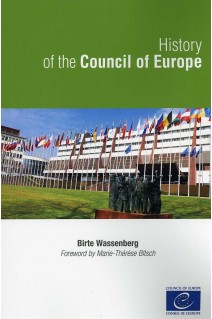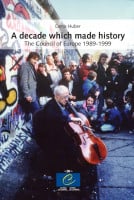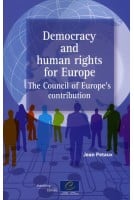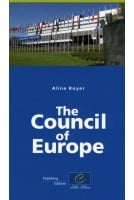



The Council of Europe, the oldest European organisation, was founded in 1949 with the aim of unifying the continent as a whole. The decision to establish its headquarters in Strasbourg was, moreover, symbolic of the desire for reconciliation between peoples. From the outset the Council of Europe adopted an institutional structure comprising a committee of ministers and a parliamentary assembly - the first in Europe. This book retraces the history of the Organisation.
Consisting initially of Western European states, the Council of Europe was destined to embrace all the continent's countries, but the Cold War delayed its enlargement. It is only since 1989 that the Council of Europe has become a truly pan-European organisation, now comprising 47 member states.
Its mission is based on three major goals: protecting human rights, promoting democratic values and guaranteeing the rule of law. The Council of Europe is also very active in fostering co-operation in all areas of life: education, sport, culture, etc. Starting in 1959, the European Court of Human Rights grew to become the Organisation's flagship institution: its judgments are binding on the member states.
As an intergovernmental organisation, the Council of Europe has had to contend with the growth of the European Union and has sought constantly to redefine its role in international relations. In these early years of the 21st century, will it succeed in securing a key position in the European institutional architecture?
List of acronyms and abbreviations
Foreword
General introduction
Part One - From inception to the Greek crisis (1949-1969)
Introduction to Part One
1. The setting up of the Council of Europe
2. Co-operation gets under way in key areas
3. The Six consolidate: the Council of Europe's response
4. The Council of Europe: a player on the international stage?
Conclusion to Part One
Part Two - Seeking a distinct identity (1969-1989)
Introduction to Part Two
1. Competition with the Community
2. Launching co-operation in new areas
3. Defending fundamental values
4. Crisis management and enlargement
5. The Council of Europe looks eastwards
Conclusion to Part Two
Part Three -The renaissance of the Council of Europe as a pan-European organisation (1989-2009)
Introduction to Part Three
1. Waves of accessions after the fall of the Wall
2. New tools for co-operation
3. The Council of Europe Summits
4. Pilot co-operation projects
5. Reform of the human rights protection machinery
6. The Council of Europe's place in the European architecture
Conclusion to Part Three
General conclusion
Chronology of events
List of agreements, charters and conventions
Lists of prominent personalities
Bibliography







The Council of Europe, the oldest European organisation, was founded in 1949 with the aim of unifying the continent as a whole. The decision to establish its headquarters in Strasbourg was, moreover, symbolic of the desire for reconciliation between peoples. From the outset the Council of Europe adopted an institutional structure comprising a committee of ministers and a parliamentary assembly - the first in Europe. This book retraces the history of the Organisation.
Consisting initially of Western European states, the Council of Europe was destined to embrace all the continent's countries, but the Cold War delayed its enlargement. It is only since 1989 that the Council of Europe has become a truly pan-European organisation, now comprising 47 member states.
Its mission is based on three major goals: protecting human rights, promoting democratic values and guaranteeing the rule of law. The Council of Europe is also very active in fostering co-operation in all areas of life: education, sport, culture, etc. Starting in 1959, the European Court of Human Rights grew to become the Organisation's flagship institution: its judgments are binding on the member states.
As an intergovernmental organisation, the Council of Europe has had to contend with the growth of the European Union and has sought constantly to redefine its role in international relations. In these early years of the 21st century, will it succeed in securing a key position in the European institutional architecture?
Please note that in accordance with our terms & conditions, PDF/epubs may only be purchased by private individuals.
